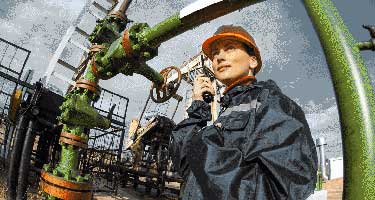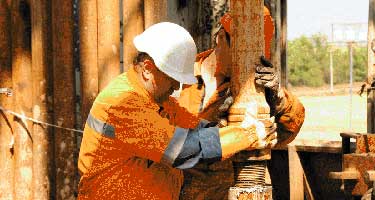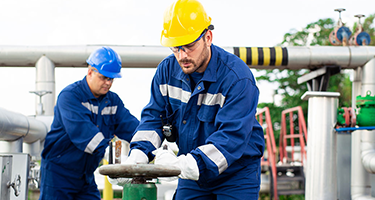The oil and gas industry, which is fraught with inherent hazards, places the utmost importance on protecting workers from fire and explosion. As a vital part of the global economy, this sector acknowledges that every safety decision has wide-reaching implications. The industry’s integration of mobile technology in safety management is not just a leap toward operational efficiency but also a significant step in creating a more cohesive and secure working environment.
The Critical Role of Safety in Oil and Gas Worksites
Maintaining safety in the oil and gas industry is a complex challenge, given the nature of the work and the environments in which it takes place. Fire and explosion hazards are among the most significant risks, requiring constant vigilance and robust safety measures. Notably marked by incidents such as the Deepwater Horizon disaster, the industry’s history serves as a continuous reminder of the potential consequences of avoidable safety oversights. These events have catalyzed the industry to re-evaluate and strengthen safety protocols, ensuring they are comprehensive and responsive to the complexities of modern oil and gas operations.
Implementing Comprehensive Safety Plans
Developing a comprehensive safety plan in the oil and gas industry demands a multifaceted approach that intertwines passive and active protection measures. Passive measures are foundational to this strategy, encompassing structural fire-resistant designs and the strategic segregation of high-risk areas to mitigate potential incidents. These measures are essential in creating a safe baseline environment and minimizing risks even before they arise.
Active measures, on the other hand, are dynamic: They involve continuous worker training, regular emergency response drills, and stringent maintenance protocols. Their aim is to ensure that personnel are not only aware of potential hazards but also adequately prepared to respond effectively in emergencies.
The integration of mobile technology plays a pivotal role in tying these elements together by supporting the effective implementation, monitoring, and ongoing refinement of safety protocols. By leveraging mobile technology, real-time data collection and analysis become possible, thereby enhancing every level of the decision-making processes.
Revolutionizing Safety With Mobile Technology in the Oil and Gas Industry
Mobile technology has significantly changed safety management in the oil and gas industry, replacing paper-based methods with dynamic digital solutions. This shift enables rapid adaptability to changing conditions—a critical feature in an environment where safety needs are constantly evolving. Real-time data processing and communication are central to this change, enhancing hazard management and emergency responsiveness.
Technological advancement also deepens the industry’s safety culture. It simplifies safety procedures, making them more accessible and encouraging wider participation across all workforce levels. This collective engagement is pivotal for a sustained commitment to safety.
Using Data to Identify and Mitigate Risks at Worksites
The ability of mobile technology to collect, analyze, and effectively utilize data in the form of analytics transforms the way safety risks are handled. With this approach, safety managers can proactively identify potential hazards and implement targeted preventive measures. Employing data in this manner moves the industry’s risk management from a reactive stance to a proactive approach, significantly reducing the likelihood of accidents while enhancing overall worksite safety.
Enhance Regular Training and Drills With Digital Tracking
Consistent training and regular emergency response drills are integral to maintaining high safety standards in the oil and gas industry. Mobile technology enhances these training programs by streamlining the organization and execution of sessions and drills. It offers an efficient means to track participation and evaluate the effectiveness of each activity, ensuring both systematic and comprehensive training.
Mobile technology also plays a crucial role in assessing the success of safety training. It allows for the collection of feedback and analysis of drill performance, pinpointing areas for improvement. This ensures that personnel are not only familiar with the latest safety procedures but can also apply them effectively in real-world scenarios.
Simplify Inspections and Recordkeeping With Real-Time Data Capture and Transfer
Traditionally, recordkeeping and safety inspections in the oil and gas industry have been labor-intensive and prone to errors. However, the introduction of mobile data collection apps has revolutionized these aspects of worksite safety. The use of technology streamlines processes and lays a solid foundation for enhanced recordkeeping and inspections.
Fire inspection software platforms like GoCanvas facilitate efficient, accurate, and real-time management of safety procedures. The reliability, accessibility, and timeliness of safety records—which are crucial for upholding high safety standards in the face of oil and gas worksite hazards—are significantly improved in dynamic and hazardous environments.
Using Mobile Technology to Enhance Communication and Response in Remote Areas
One significant advantage of mobile technology over traditional methods is its ability to improve communication. In remote areas where clear and consistent communication is crucial, mobile technology offers reliable connections. This capability is essential for maintaining safe and efficient operations, especially in areas where traditional communication methods are inadequate or nonexistent.
Utilizing Data for Quick, Informed Decision-Making
The ability to instantly access accurate safety data is a critical advantage of mobile technology. In emergency situations where rapid decision-making is required, having the latest safety rules and information available on mobile devices is invaluable. This capability significantly reduces risks and enhances the management of incidents, making mobile technology a game-changer in risk mitigation.
Embracing the Future of Safety in Oil & Gas Operations
The integration of mobile technology into fire and explosion risk management marks a turning point in the oil and gas industry. This evolution is more than a step toward enhancing worker safety; it’s a leap in operational efficiency and adaptability. As the industry navigates new challenges and continues to evolve, mobile technology is positioned to be a key player in elevating safety standards and is expected to serve an increasingly vital role in the industry’s future. This technology is not just keeping pace with industry needs but shaping a safer, more efficient future for oil and gas operations worldwide.
Drill Deeper Into Technology’s Role in Oil and Gas Safety
Our e-book, “5 Common Hazards in Oil and Gas Extraction and How to Address Them,” is packed with insights to help prevent fire and explosion risks at your worksite and ensure the safety of your workers.
What will you find in this e-book?
- In-depth analysis of the most prevalent safety hazards in the oil and gas industry
- Guidance on evaluating the safety design of your rig or well, with an emphasis on safety training and equipment maintenance
- Practical tips for leveraging mobile technology to analyze and enhance your existing safety systems
This e-book is an essential resource for anyone looking to fortify their safety measures in the oil and gas sector. Don’t miss out on valuable insights — download your copy now and take a significant step toward a safer, more technologically advanced worksite.

Stay in Touch!
About GoCanvas
GoCanvas® is on a mission to simplify inspections and maximize compliance. Our intuitive platform takes care of the administrative tasks, freeing our customers to focus on what truly matters – safeguarding their people, protecting their equipment, and delivering exceptional quality to their customers.
Since 2008, thousands of companies have chosen GoCanvas as their go-to partner for seamless field operations.

Check out even more resources

Manage Risk for Oil and Gas Companies With a Risk Assessment Checklist
Today, the challenges faced by the oil and gas industry are considerable. Effective business leaders and managers must thoroughly understand them to determine…

Solutions to Waste Management Issues For Oil & Gas Companies
Waste management compliance is important in every industry. The oil and gas industry, in particular, has a strong risk of waste emissions…

4 Ways Big Data is Transforming Oil and Gas
Oil and gas companies are getting smart about using the data they collect to gain insights and manage people, equipment, and worksites more effectively…